This week we have launched our first ever collection of prints by contemporary artist Sarah Hardacre. She generously made the trip all the way from Salford to Brighton to meet with us and introduce her brilliant work. This article delves into our animated conversation about tower blocks, titillation, Modernism, feminism and the glamour and grit of Salford’s social housing experiments…
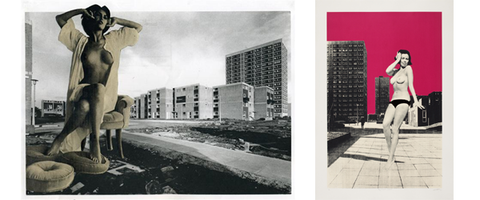
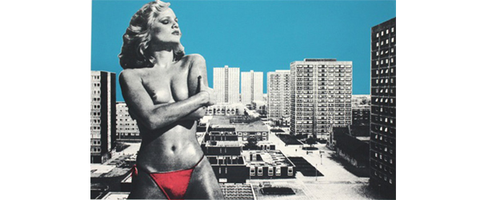
Over a brew in one of Brighton’s quintessentially quirky coffee shops Sarah talked us through our new collection. We currently have four limited edition silkscreen prints, three of which are classic Sarah Hardacre works featuring backdrops of Salford tower blocks juxtaposed with the sensual curves of cut-outs from ‘gentleman’s’ magazines. The fourth, ‘Jodie Knew It and Remained Professional’, is a reworking of the iconic Marlboro cigarette packet. The photographic collage has Sarah’s signature bare-breasted beauty clasping the wrist of a rugged vintage cowboy.
‘Jodie Knew It and Remained Professional’ was Sarah’s first work instigated by a brief from a fellow artist. The piece came about through her participation in the group show ‘Your Garden is Looking a Mess Could You Please Tidy it up’, curated by contemporary artist Andrew Curtis. The group of artists, including Sir Peter Blake, were given the iconic Marlboro cigarette flip box designed in 1955 by Philip Morris as their starting point. Through the cigarette packet, which currently faces the predicament of a progressively imageless future, the exhibition sought to explore print ephemera in this period of dismantling, re-invention and possible cultural renewal.
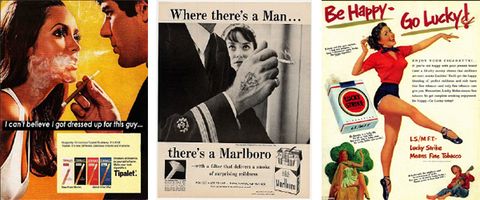
The Marlboro pack was a perfect springboard for Sarah. Cigarette advertising was at its peak in the 1950s and ‘60s (as Man Men taught us) and had a major aspirational affect on people’s desire to display their identity. It is an industry dominated by print ephemera, with a glamorous past and a perilous future. Sarah’s work is fuelled by her 20th century social history interests, her fascination in the contrasts between the aspiration and the reality of 60’s architecture, Modernism, working class society, sexuality and social policy. It is deeply rooted in her passion for the print industry and fundamentally concerned with identity; her own, that of women and the working classes.

Sarah created a second piece for the group show, ‘Those Little Bits of Soot You Can’t Sweep Up’, a candid collage of nuns smoking in front of the wonderful example of ‘60s architecture that is ‘West Salford Youth Club’. The composition and colours echo the Marlboro packet but the subject of four nuns in restricted habits fuelling their nicotine habit in Salford is far from that of the autonomous Wild West cowboy! Sarah explained how her work can be considered an exploration of Salford’s post-industrial landscape. Her prints are a charting of her personal environment, the city she has lived in for 12 years now.
Sarah spoke eagerly and knowledgably about Salford’s radical social history, including the Battle of Bexley Square (a demonstration of unemployed workers’ in 1931) and the fact that it was the home of the Pankhurst sisters, infamous political activists and leaders of the British suffragette movement. Her thorough research into the Salford’s colourful history provides the foundation of her artwork. The history and environment of Salford situates her silkscreens and collages, imbuing them with a fascinating richness and depth.
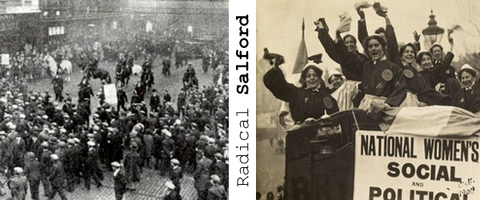
Salford, like many British cities, was subjected to post-war housing experiments which were dominated by Modernist architecture. Modernism in design and architecture emerged in the aftermath of WW1 and the Russian Revolution. It rejected history and applied ornament and believed that design and technology could transform society. Modernism was driven by the search for utopia, an idea that the world could be fundamentally rethought. Wars brought a massive need for housing and provided the new technology necessary to develop architectural design. Political social policy was intrinsically linked to the new developments in architecture and Sarah explained how her work explores the social implications of this desire to build a brave new society.
Investigating Britain’s high-rise housing experiments, Sarah’s work is packed with photographs of sixties tower-blocks and social housing estates from local history archives. The architectural elements reference her exploration into the effects of urban regeneration. She explained how this new, modern and aspirational architecture was designed to induce collectivism but has instead left a legacy of alienation, serving to marginalise those who live there. Gone are the days of back allies full of children playing and women hanging washing between rows of terraced houses, replaced by suburban towers of individuals plugged into electrical appliances.

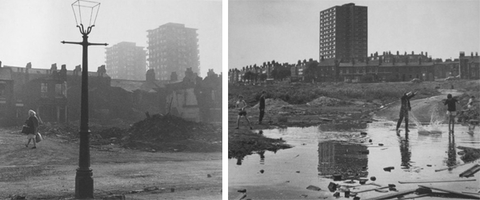
Sarah is particularly interested in the effect these literally ‘boxed off’ neighbourhoods had on Salford’s working class community. She explained how Salford’s Working Class Movement Library has been a great source of inspiration and imagery. In all of the backgrounds in all of her prints the absence of any people is tangible. There’s no unemployed men demonstrating, women nattering on the street corners or children crowded round an ice-cream van. Her work asks whether this avant garde utopian housing accompanied by an influx of ‘convenient’ appliances effectively ripped the heart out of the community.


“I am concerned with how corners were cut between the triangle of private financiers, local authorities and hypnotized town planners to knock up social housing at high volume and low quality which caused such vast architectural differences between the classes”, Sarah declares. She points to the ironic contrast between the visionary Brutalist architecture that was intended to be integrating and protective and the brutal reality of the working class people actually living in these concrete constructions. She suggests that life has a rawness that is constrained by these dehumanising architectural grids. Behind the net curtains, in front of the TV and under the strip lighting, people “dance and drink and screw because there’s nothing else to do” (Pulp, ‘Common People’).
At the heart of Sarah’s work is her “personal questioning of the roles of women within this new futuristic world of the home, specifically within the context of forever ‘re-generating’ working class communities.” Sarah doesn’t shy away from questioning the position of women in post-war housing experiments; in fact the issue is boldly laid bare. The Salford skylines are overshadowed by the sensual shapes of her appropriated second-hand porn models (or ‘gentleman’s’ magazines as she prefers to call them!). The rounded tummies, buxom chests and tufts of body hair dramatically contrast with the uniformity of the hard-edged, phallic housing.
Of her sometimes explicit female imagery Sarah says, “I think I can get away with it because I’m a woman.” Her selection of sixties and seventies models is celebratory in a sense, they appear proud and powerful. Their natural curves and sexuality represent a stance against the male dominated environment, technology and politics. Just as Sarah’s Salford shots can be read as nostalgic of a lost era of optimism, her scantily clad women wistfully hark back to a time before fake tan, manicured body hair and plastic surgery; a time when erotic images were much closer to the reality of women’s bodies.
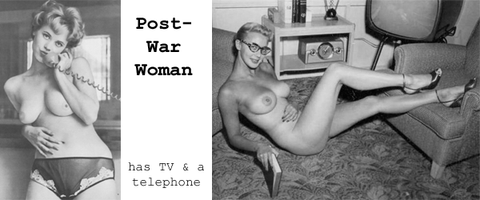
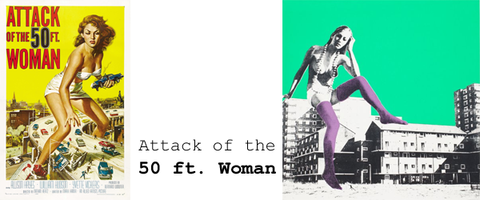
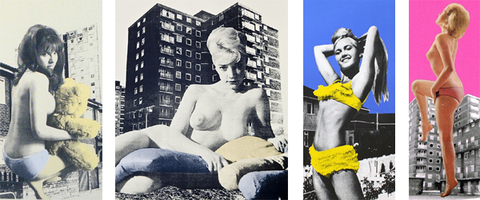
Sarah highlighted how the iconic poster for the 1958 American science fiction film ‘Attack of the 50 Foot Woman’ represents the energy and power women have to burst out of their restrictive environments. You can see the influence of this image in her prints which have enlarged women straddling sixties architecture. She previously wrote, “The women presented in the prints and collages draw strength from fragilities and bring promise for change on a grander scale.”
Is Sarah Hardacre a feminist? We had to ask. She is certainly influenced by feminist artists such as Penny Slinger and Linder Sterling. Her interest in social history includes radical women’s movements and the changing role of women in working class communities. She acknowledges her work’s position in the contentious history of the female nude as well as her own position as a female artist. However, she said she’s not quite ready to answer the question. Her work is more about exploring, investigating and raising questions rather than asserting a political or philosophical position. Currently Sarah describes her work as biographical rather than feminist.

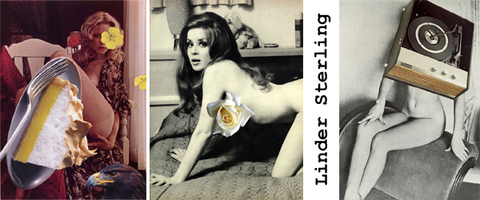
Sarah’s highly personal prints explore her identity as a Salford resident, a woman, an artist and a printer. They investigate her own family history, her observations of depravation working for charities such as ChildLine and the NHS drug services; they reflect her passion for printing, a traditional, labour-based, industry and her infectious enthusiasm for social history. We asked whether she thought she could apply her aesthetic to a different environment and she revealed that she’s currently working on a New York project, exploring city housing authority tower blocks.
We’re excited to see how Sarah’s art develops. The questions she’s raising in her work are fascinating and important. The fact that she manages to raise them in such a visually appealing way is surely the key to her success. We asked whether she thinks she’ll get to a stage with her art where she can answer the questions she raises. “I have got stuff to stay” she replied. After the most interesting cup of tea, maybe ever, we don’t doubt it.

Discover our selection of nude art prints here.
Image Credits:
Sarah Hardacre
Shirley Baker Salford 1960s (Tate)
Penelope Singer, 'Waiting-Room' : photographic collage on card (1977)
Linder Sterling